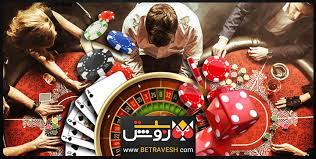Introduction
The Joker card is a unique and intriguing element in the world of playing cards. Unlike the traditional cards in a standard deck, the jokercard.ca balance holds a special place as both a wildcard and a representation of chaos, humor, and duality. This article explores the history, significance, and various interpretations of the Joker card, shedding light on its role in card games and its cultural impact.
Historical Background
The Joker card originated in the United States during the mid-19th century, emerging as a trump card in the game of Euchre. Its introduction added a new layer of strategy and excitement to card games. Initially, the Joker was referred to as the “Best Bower,” and it was designed to take on the highest value in the game, surpassing even the Ace.
As card games evolved, so did the significance of the Joker. It became a wildcard in many games, allowing players to substitute it for any card they needed. This versatility contributed to its popularity, and the Joker soon found its way into various card games around the world.
Design and Symbolism
The design of the Joker card varies widely, but it typically features a whimsical character, often resembling a jester or clown. The imagery on the card often incorporates bright colors, elaborate costumes, and playful expressions, reinforcing the Joker’s association with fun and unpredictability.
Symbolically, the Joker embodies several themes:
- Duality: The Joker is often seen as a representation of duality, embodying both chaos and order, laughter and sorrow. This duality makes the Joker a compelling character, highlighting the complexities of human nature and life itself.
- Freedom: As a wildcard, the Joker symbolizes freedom and the breaking of rules. It challenges the conventional structure of card games, allowing players to think outside the box and adapt their strategies.
- Chaos and Disorder: In many interpretations, the Joker is seen as a harbinger of chaos. It disrupts the norm and introduces an element of surprise, reminding players that unpredictability is an inherent part of life.
Cultural Impact
The Joker card has transcended the realm of card games and entered popular culture. It is often referenced in literature, films, and art, serving as a metaphor for the unpredictability of life and the hidden complexities within individuals. The Joker is a central character in various narratives, notably in the Batman franchise, where he represents the chaotic force opposing order and justice.
In psychological terms, the Joker can be seen as a symbol of the subconscious mind—the part of us that embraces spontaneity, creativity, and the unexpected. This representation has led to the Joker being embraced in various art forms, where it is celebrated for its ability to evoke laughter, provoke thought, and challenge societal norms.
The Joker in Card Games Today
Today, the Joker card continues to play a significant role in many card games, including Poker, Rummy, and others. In some games, the Joker can be used as a wild card, while in others, it may have specific roles or point values. Its presence adds excitement and variability to the gameplay, making each session unique.
Furthermore, the inclusion of Jokers in games often leads to strategic innovations. Players must decide when to use their Jokers for maximum advantage, reflecting the broader themes of risk-taking and adaptability in life.
Conclusion
The Joker card is far more than just a playful element in a deck of cards. Its rich history, multifaceted symbolism, and cultural significance make it a compelling figure that resonates with themes of duality, freedom, and chaos. As we navigate through the complexities of life, the Joker serves as a reminder that embracing uncertainty can lead to unexpected opportunities and adventures. Whether in a game or as a metaphor for life, the Joker continues to captivate our imagination and challenge our perceptions.

More Stories
Slot Games: Exploring the Thrill and Excitement of Modern Casino Entertainment
Slot Games: The Exciting World of Online and Casino Entertainment
Slot Games: Where Chance, Design, and Entertainment Meet